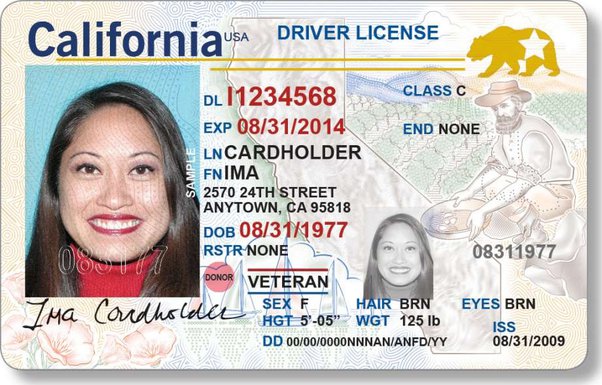Contents
A. Importance of Pre-Purchase Inspections
Pre-purchase inspections are crucial for assessing the condition of a used car before making a buying decision, helping buyers avoid potential pitfalls and ensuring a satisfactory purchase experience to get Navigate Here.
B. Benefits of Conducting Pre-Purchase Inspections
By uncovering hidden issues, providing peace of mind, and enabling informed negotiation, pre-purchase inspections offer numerous benefits to used car buyers, ultimately leading to better purchase outcomes.
C. Overview of the Article
This article serves as a comprehensive guide to pre-purchase inspections for used car buyers, covering the preparation process, what to expect during inspections, interpreting inspection results, and making informed purchasing decisions.
II. Preparing for a Pre-Purchase Inspection
A. Researching the Vehicle
- Gathering Vehicle Information: Collecting details such as make, model, year, and mileage is essential for understanding the vehicle’s specifications and potential issues.
- Checking Vehicle History Reports: Reviewing vehicle history reports can reveal past accidents, maintenance records, and title issues that may impact the vehicle’s value and reliability.
- Understanding Common Issues: Researching common problems associated with the vehicle model helps buyers anticipate potential issues and discuss them with the inspector.
B. Choosing a Qualified Inspector
- Researching Inspection Services: Researching reputable inspection services ensures that buyers select qualified professionals with a track record of thorough and accurate assessments.
- Checking Inspector Credentials: Verifying inspector credentials, certifications, and affiliations ensures that buyers receive reliable inspection services from experienced professionals.
- Verifying Inspection Processes: Understanding the inspector’s inspection process and what is included in the inspection helps buyers set proper expectations and ensure comprehensive evaluations.
C. Scheduling the Inspection Appointment
- Setting a Convenient Time: Coordinating a convenient inspection time allows buyers to be present during the inspection and ask questions as needed.
- Coordinating with the Seller: Communicating with the seller to arrange access to the vehicle for inspection ensures a smooth process and minimizes delays.
- Ensuring Access to the Vehicle: Ensuring that the inspector has access to the vehicle and necessary documentation streamlines the inspection process and ensures thorough evaluations.
III. What to Expect During a Pre-Purchase Inspection
A. Exterior Inspection
- Evaluation of Body Condition: Inspectors assess the vehicle’s exterior for signs of damage, rust, dents, and paint defects that may indicate previous accidents or neglect.
- Examination of Paint Quality: Examining the paint quality helps identify repainted panels or discrepancies in paint color, suggesting potential repairs or aftermarket modifications.
- Inspection of Exterior Components: Inspectors check exterior components such as lights, mirrors, glass, and tires for functionality, condition, and wear.
B. Interior Inspection
- Assessment of Interior Condition: Inspectors evaluate the interior for cleanliness, wear, tear, and signs of damage, ensuring that the cabin is comfortable and well-maintained.
- Testing of Electronic Components: Testing electronic components such as infotainment systems, climate controls, and power accessories ensures that they function properly and are free of defects.
- Examination of Upholstery and Trim: Inspectors inspect upholstery, trim, and interior surfaces for wear, stains, fading, or damage, indicating the vehicle’s overall care and maintenance.
C. Mechanical Inspection
- Evaluation of Engine Performance: Assessing engine performance, including starting, idling, acceleration, and emissions, helps identify mechanical issues and assess the engine’s condition.
- Inspection of Suspension and Steering: Inspecting suspension and steering components for wear, leaks, noises, and alignment issues ensures safe handling and ride quality.
- Testing of Brakes and Drivetrain: Testing brakes, transmission, and drivetrain components for proper operation, responsiveness, and smoothness helps ensure safe and reliable vehicle performance.
IV. Interpreting Inspection Results
A. Reviewing Inspection Report
- Understanding Inspection Findings: Reviewing the inspection report helps buyers understand the vehicle’s condition, identify any issues or concerns, and make informed decisions.
- Identifying Red Flags: Identifying red flags or significant issues highlighted in the inspection report helps buyers assess the vehicle’s suitability for purchase and potential repair costs.
- Seeking Clarification on Concerns: Seeking clarification from the inspector on any findings or concerns helps buyers make sense of the inspection report and address any uncertainties or questions.
B. Negotiating with the Seller
- Discussing Inspection Findings: Discussing inspection findings with the seller allows buyers to negotiate price adjustments or repairs based on identified issues or concerns.
- Negotiating Price Adjustments: Negotiating price adjustments based on inspection findings helps buyers ensure they are paying a fair price for the vehicle relative to its condition.
- Considering Repair Costs: Considering potential repair costs and factoring them into negotiations helps buyers make informed decisions about the vehicle’s value and affordability.
C. Making an Informed Decision
- Weighing Inspection Results: Weighing inspection results, repair costs, and negotiation outcomes helps buyers decide whether to proceed with the purchase or explore other options.
- Considering Long-Term Implications: Considering the long-term implications of purchasing a vehicle with identified issues helps buyers avoid costly repairs or safety concerns down the road.
- Proceeding with Purchase or Walking Away: Making a final decision to proceed with the purchase or walk away based on inspection results, negotiations, and overall confidence in the vehicle’s condition.
V. Conclusion
A. Recap of Pre-Purchase Inspection Importance
Pre-purchase inspections are essential for used car buyers to assess the condition of a vehicle, identify potential issues, and make informed purchasing decisions.
B. Encouragement for Buyers to Prioritize Inspections
Prioritizing pre-purchase inspections empowers buyers to protect their investment, avoid costly surprises, and ensure a positive buying experience.
C. Final Thoughts on Making Informed Buying Decisions
By following the guidelines outlined in this article and conducting thorough pre-purchase inspections, buyers can maximize their purchase and enjoy a safe, reliable, and satisfying vehicle ownership experience.











